Are you looking to streamline your printing process? Understanding the right specifications for your project can make a world of difference, whether you're working on a brochure, business card, or poster. In this article, we'll walk you through the key printing specifications you need to consider, like paper type, resolution, and color profiles. So, let's dive in and get your printing project off to the perfect startâread more to learn all about it!
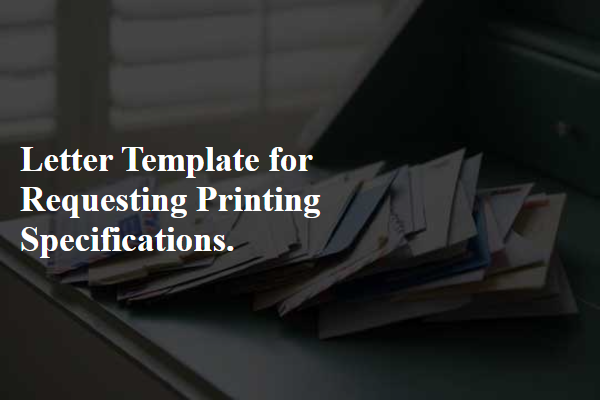
Purpose of Document
The detailed specifications for printing documents are essential for ensuring high-quality output. Print resolution, typically measured in dots per inch (DPI), should be at least 300 DPI for clear images. Paper types, including glossy or matte finishes, should be specified to align with the intended use (e.g., marketing materials or internal reports). Color models, such as CMYK (used for full-color prints) or RGB (best for digital displays), play a crucial role in achieving accurate color reproduction. Additionally, document sizes, including standard formats like A4 or letter size, dictate how material fits into various applications. Final deadlines for submission should be defined to ensure timely delivery of the printed materials, crucial for event planning or promotional campaigns.
Print Material Details
When requesting printing specifications, it is essential to detail the print material attributes that are necessary for the project. Outline the type of material required, such as standard paper, textured cardstock, or synthetic film, specifying the weight in grams per square meter (gsm) for better durability. Include the desired dimensions in millimeters, for example, A4 size (210 x 297 mm) or custom sizes. Specify color characteristics, mentioning whether full-color CMYK printing is needed or if black and white is sufficient. Additionally, address finishes, such as matte or glossy coatings, which can impact presentation. If applicable, note binding types like spiral or saddle-stitched to enhance functionality and appearance. Last, provide a deadline for the completed product to ensure timely delivery.
Printing Techniques Desired
In the realm of commercial printing, identifying the appropriate printing techniques is crucial for achieving desired results. Offset printing, popular for its superior image quality, utilizes a series of plates (often aluminum) to transfer ink onto various substrates, accommodating runs of thousands of copies efficiently. Digital printing, favored for its speed and flexibility, employs high-resolution inkjet or laser technology to produce vibrant images directly from digital files, ideal for short runs or customization. Additionally, specialty techniques such as letterpress, which creates a tactile finish through raised surfaces, and screen printing, commonly used for textiles, offer unique aesthetic qualities. Understanding paper types (such as cardstock or glossy), ink specifications, and color modes (RGB vs CMYK) plays a significant role in achieving the desired print outcome. Clients should articulate their needs clearly to ensure alignment with the chosen printing methods.
Ink and Color Specifications
When printing materials, precise ink and color specifications are crucial for achieving desired visual results. Colors utilized should adhere to specific standards, such as Pantone Matching System (PMS) for consistency, ensuring that brand identity remains intact across various platforms. CMYK (Cyan, Magenta, Yellow, and Key/Black) values must be provided for accurate representation in full-color printing processes, while RGB (Red, Green, Blue) specifications are necessary for digital displays. Additionally, details concerning ink types, such as soy-based or water-based options, can impact environmental sustainability and print durability. Material thickness (measured in gsm - grams per square meter) is also vital for determining the quality of printed outputs, influencing both feel and longevity.
Delivery Deadline and Location
When requesting printing specifications, it's crucial to specify delivery deadlines and precise delivery locations to ensure timely and accurate fulfillment. For instance, a printing project may require completion by November 15, 2023, to align with an event launch in New York City, which necessitates a destination address of 123 Marketing Avenue, New York, NY 10001. Clear communication of these details facilitates effective coordination between the printing service provider and the client, ensuring all logistical considerations are met. Selecting reliable courier services that adhere to timelines and confirm delivery at specified locations enhances overall project management efficiency, preventing potential disruptions in marketing strategies.

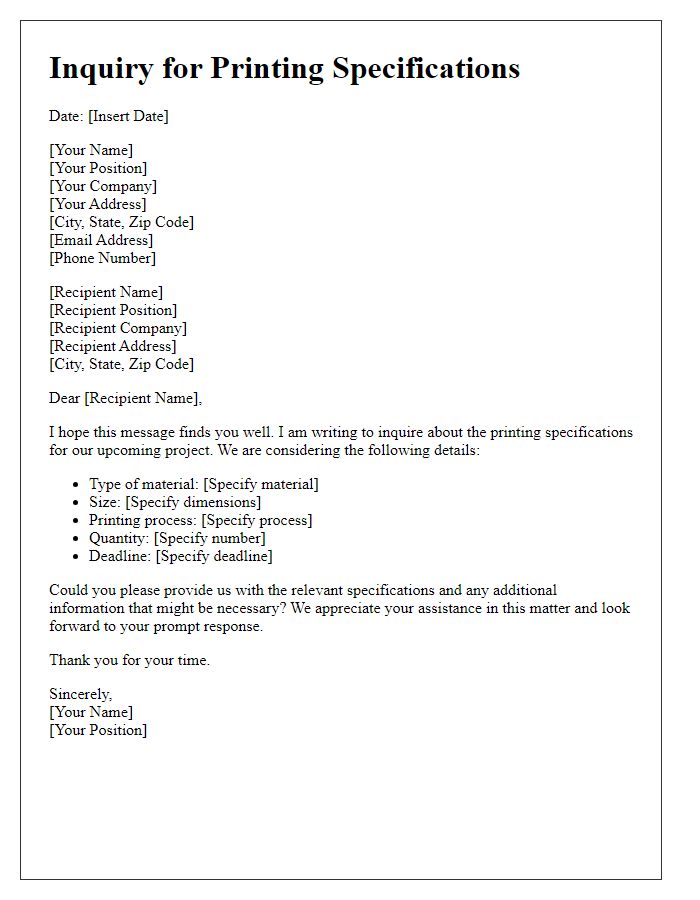
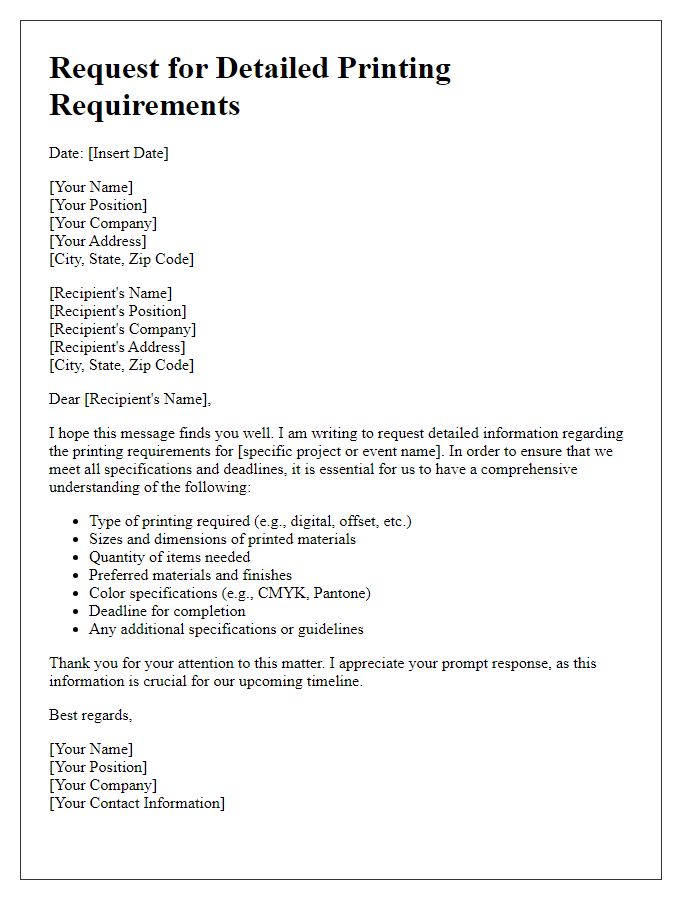
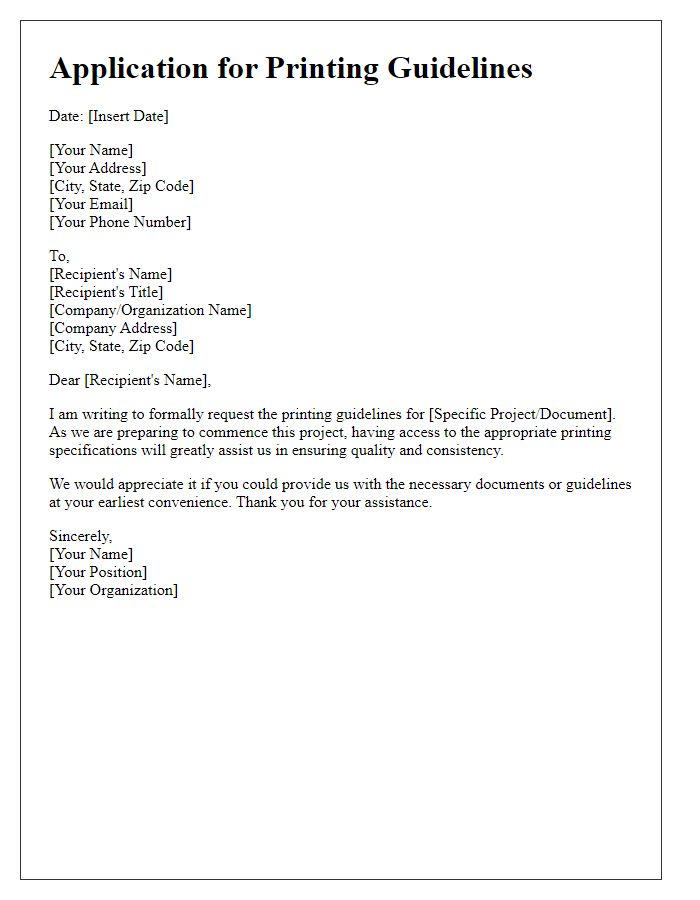
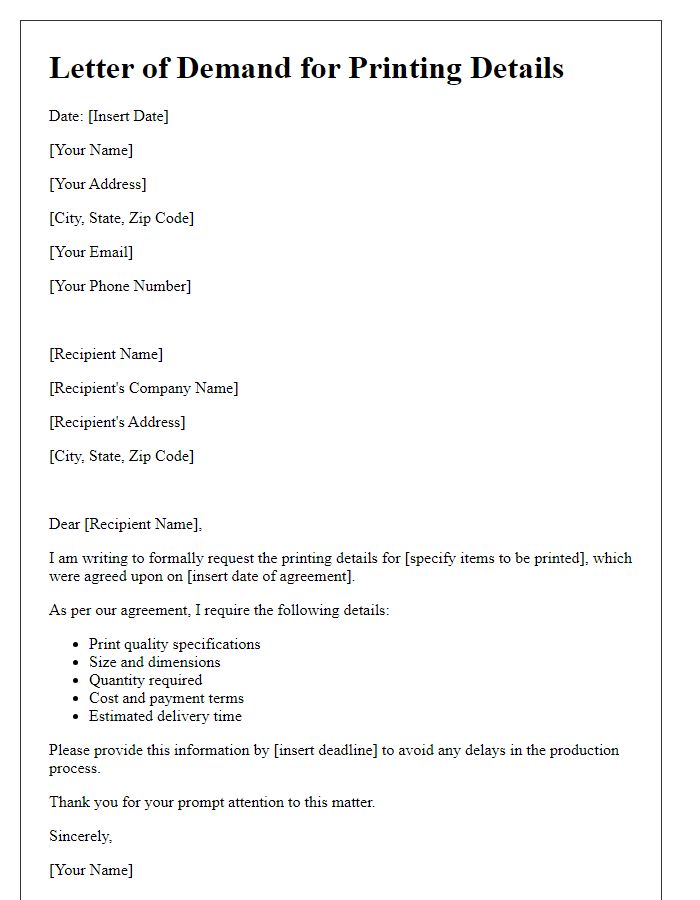
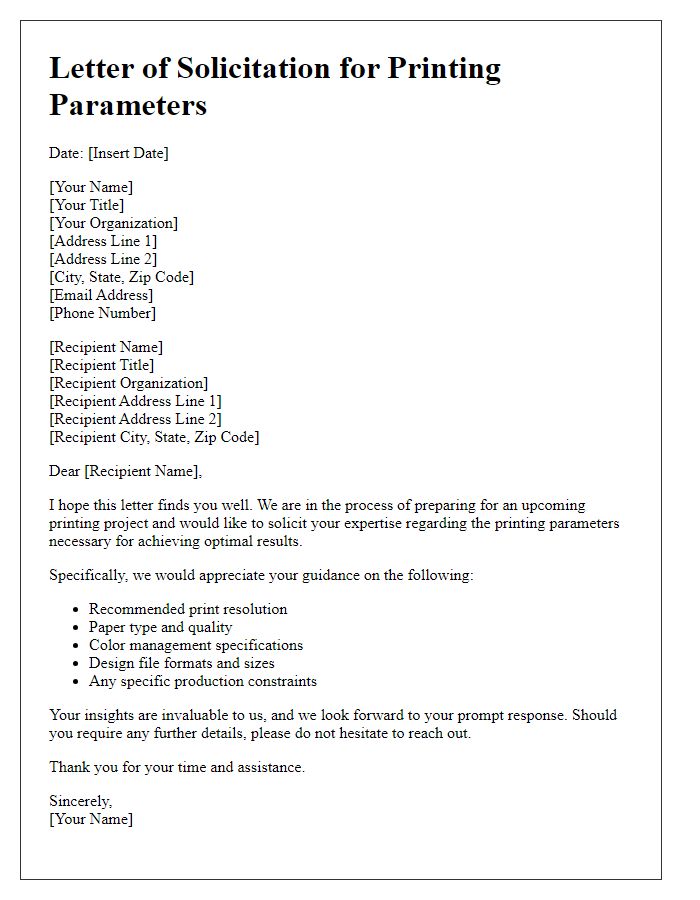
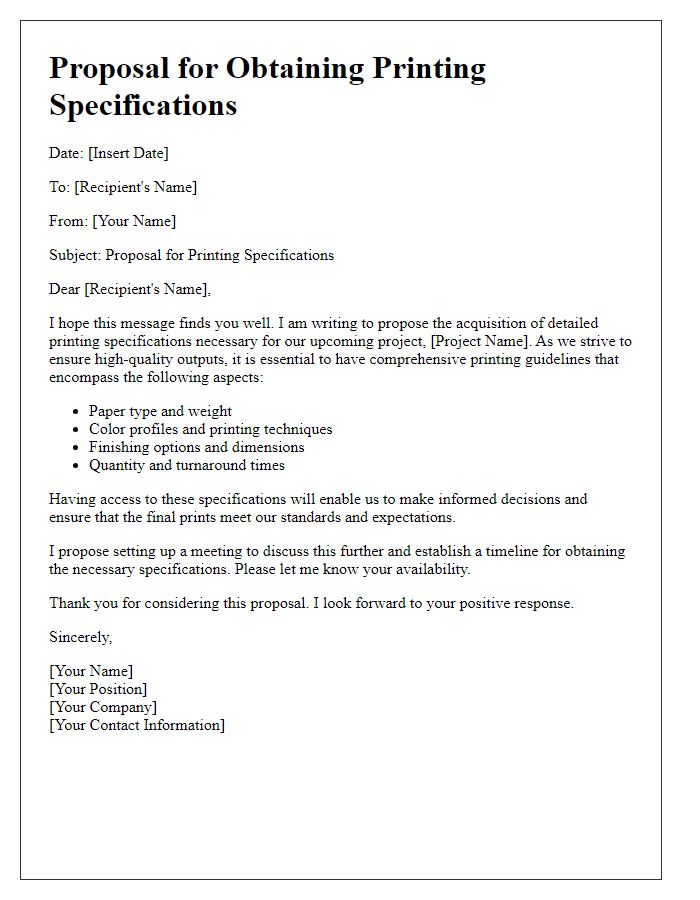
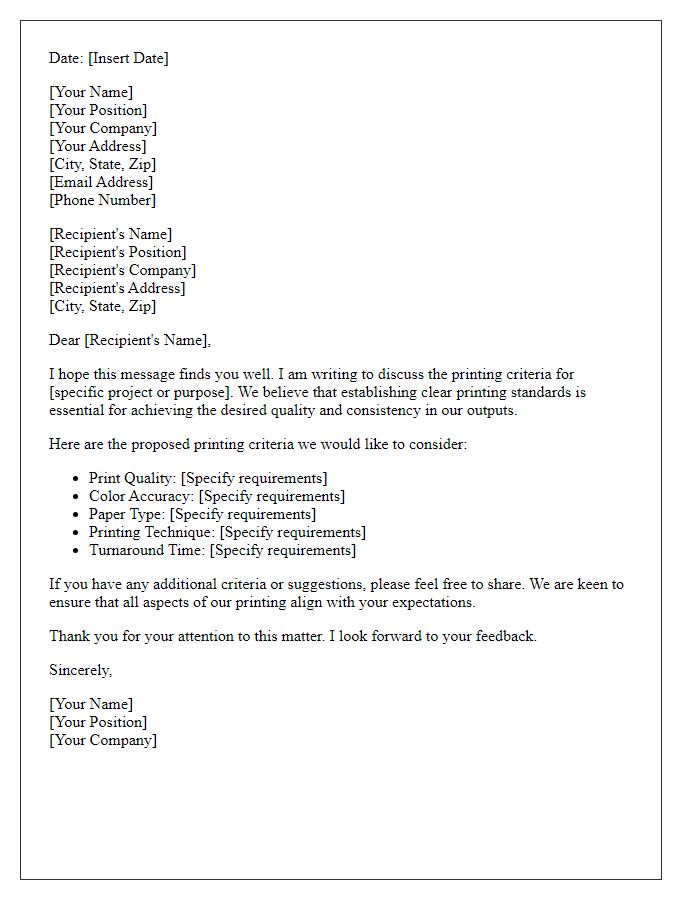
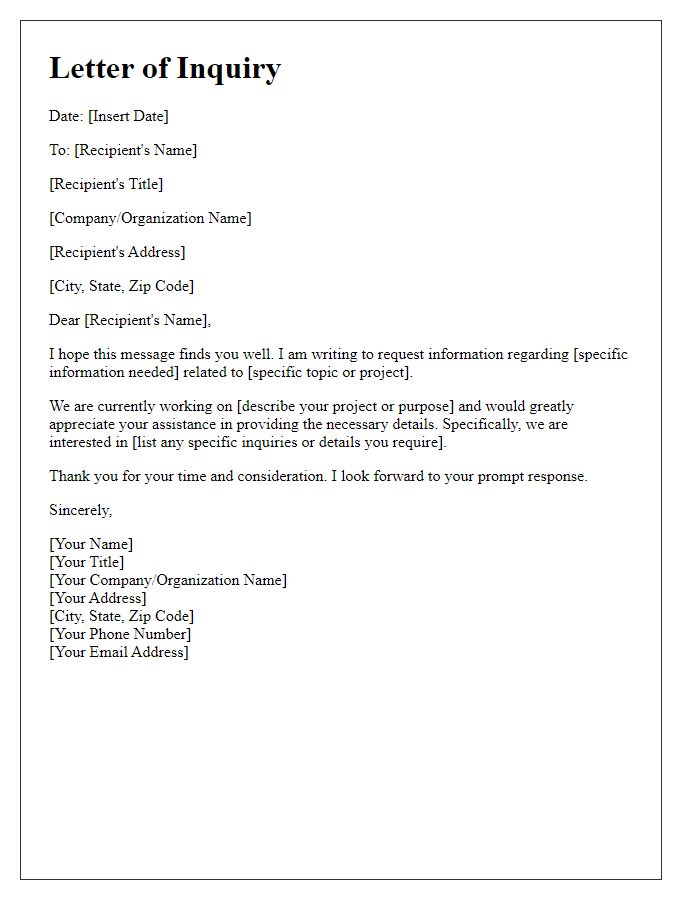
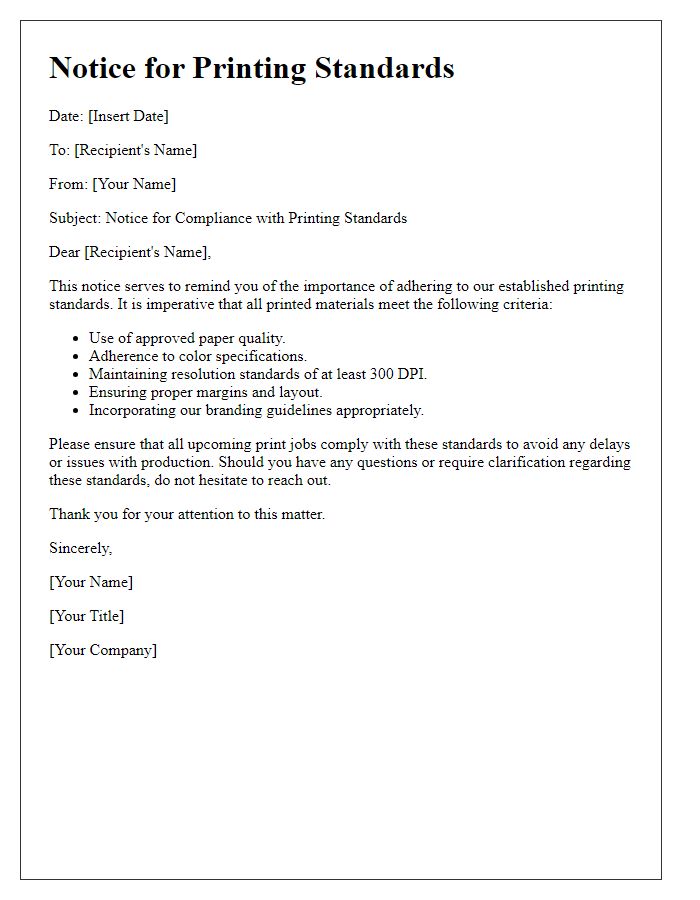
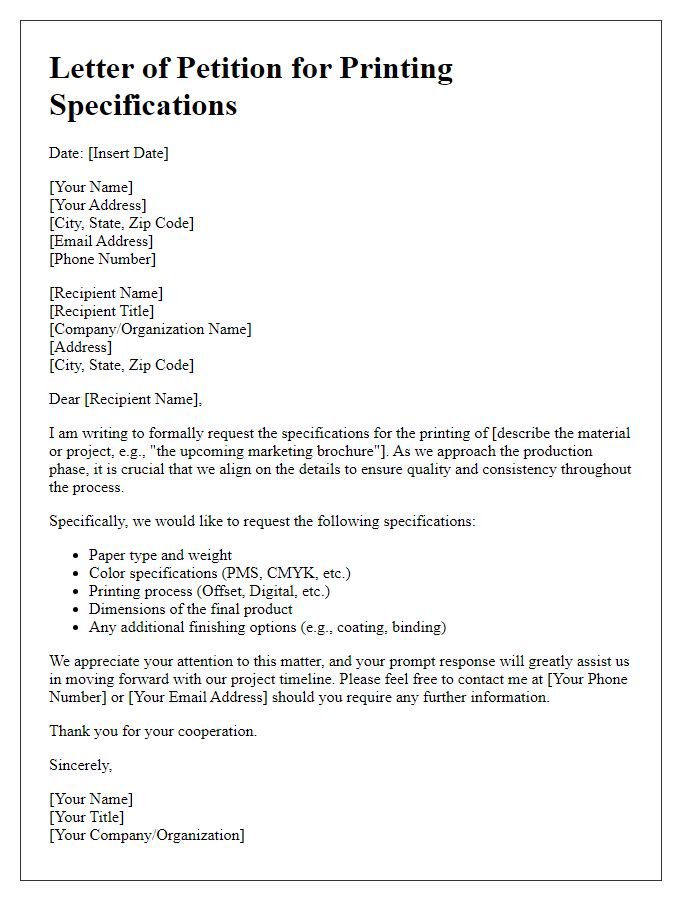


Comments